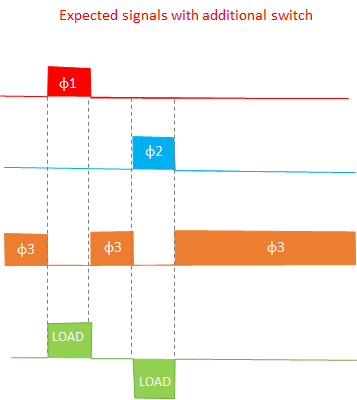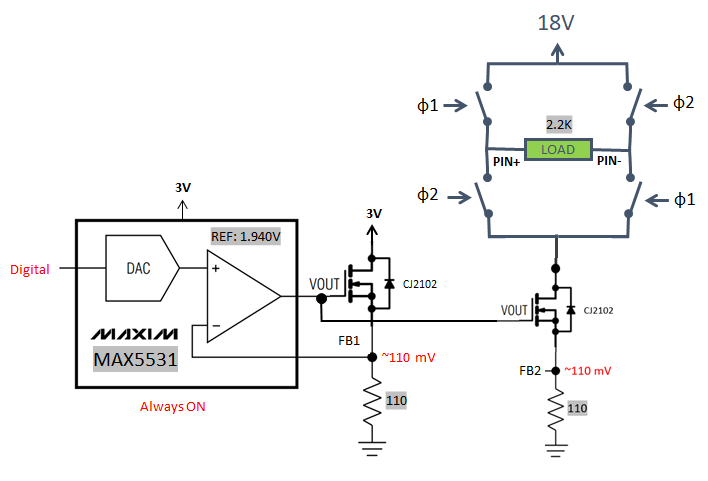The circuit below shows a Voltage to Current converter based on a DAC, opamp, transistor and switches. The last one, allow to have a bipolar signal output.
During the experimentation, the DAC is setup to get ~330mV in the resistor (330 ohm) at the transistor source in order to get 1mA current and the LOAD.
The circuit (except the DAC) is simulate (in multisim) with success.
The switches used during experimentation are based on MAX4623.
In the real world, there is an unexpected situation when the switch turn on (please, refer to the waveform below).
The waveforms of the LOAD (2.2K ohm) are shows in the scope chart (PIN+ and PIN-). Everything is as expected, except the part marked in red color.
The expected waveforms are show below. These waveform allow to have a bipolar current (+/-) in the load.
Any suggestion in order to understand the unexpected situation is appreciated. As well as an approach to avoided.
Edit:
As suggested by Tony, the voltage in the mosfet source has been reduced to ~110mV.
The results in this experiment change a little a show the waveforms below:
Edit:
As suggested by Spehro, a switch could be added to avoid the op-amp to saturate.
Below the proposal and expected signals.
Edit:
Below a proposal using a current mirror, following Tony and Spehro suggestions.
The waveform results improved with this proposal:
However, there are some not desired situations:
- The left part of the mirror is always on, increasing the power consumption. Perhaps, a new question (based on this experimentation) will be: how to implement a ultra low power voltage-current converter (0 to 10mA)?
- The initial peak (when the switch turn ON) is too high for the load. Please, refer to waveform below.
Edit (explain of unexpected situation):
As suggested, the unexpected situation is explained by the setting time of the op-amp. In summary, once the transistor turn on, the op-amp need time for adjustment (with the feedback). To solve this situation, the transistor is keep ON in order to allow the op-amp not saturated. One solution is presented in the proposal (see previous edit), where an additional transistor is added (making a mirror).
Thanks












